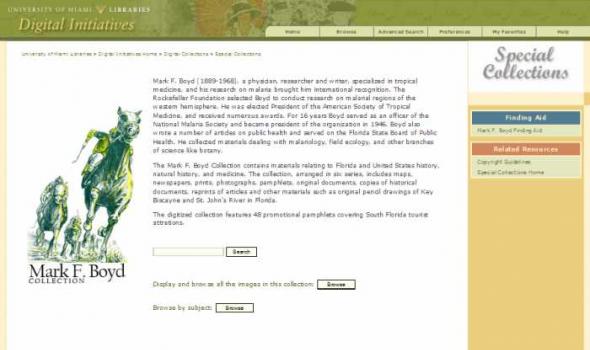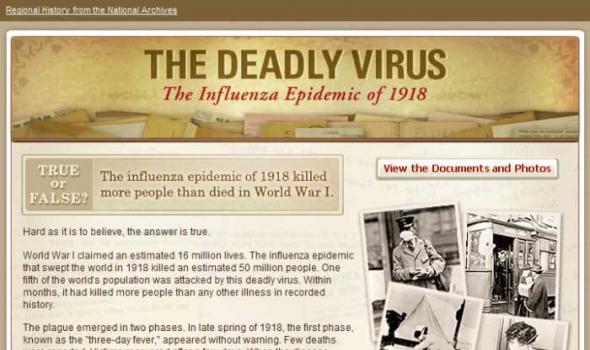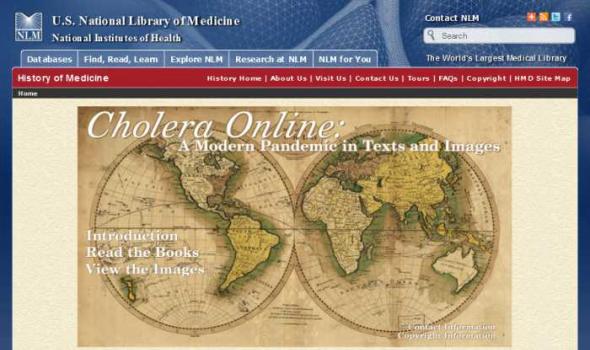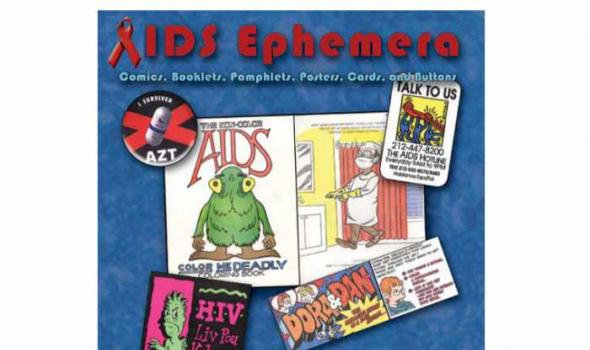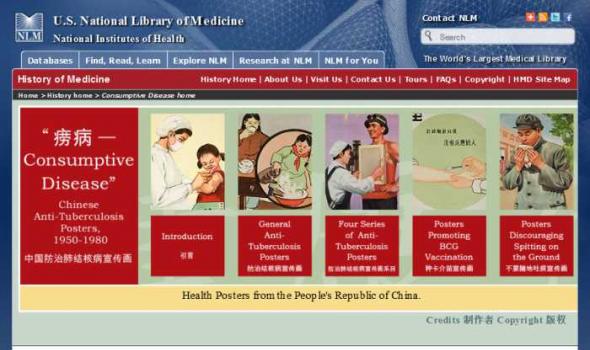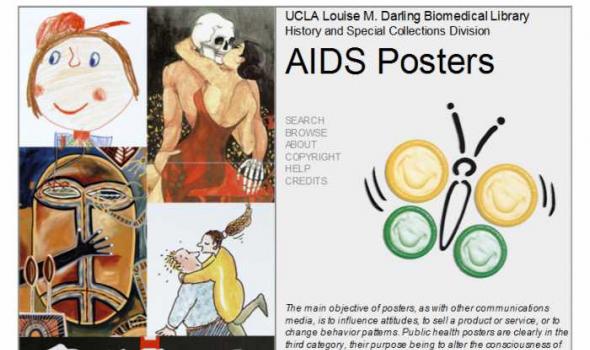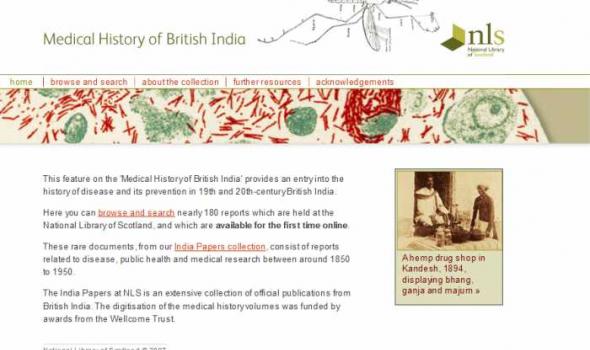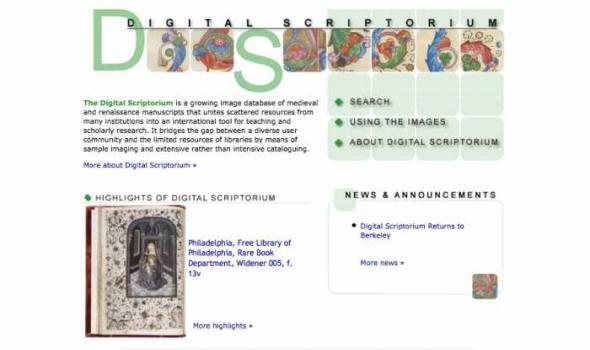Category: Diseases & Pathogens
Results
Mark F. Boyd (1889-1968), a physician, researcher and writer, specialized in tropical medicine, and his research on malaria brought him international recognition. The Rockefeller Foundation selected Boyd to conduct research on malarial regions of the western hemisphere. He was elected President of the American Society of Tropical Medicine, and received numerous awards. For 16 years Boyd served as an officer of the National Malaria Society and became president of the organization in 1946. Boyd also wrote a number of articles on public health and served on the Florida State Board of Public Health. He collected materials dealing with malariology, field ecology, and other branches of science like botany. The Mark F.
The Deadly Virus True or False? The Influenza Epidemic of 1918 killed more people than died in World War One. View the Documents and Photos Hard as it is to believe, the answer is true. World War I claimed an estimated 16 million lives. The influenza epidemic that swept the world in 1918 killed an estimated 50 million people. One fifth of the world's population was attacked by this deadly virus. Within months, it had killed more people than any other illness in recorded history. The plague emerged in two phases. In late spring of 1918, the first phase, known as the "three-day fever," appeared without warning. Few deaths were reported. Victims recovered after a few days. When the disease surfaced again that fall, it was far more severe.
History of Medicine INTRODUCTION Tropical medicine began in the nineteenth century when doctors diagnosed infectious diseases in soldiers and colonists who had lived in tropical areas. In 1877, English scientist Sir Patrick Manson proved that mosquitoes spread elephantiasis to humans and he later theorized that the same was true with malaria. This was an enormous step in tropical medicine and the understanding of tropical diseases, leading to advances in prevention methods. The field of tropical medicine consists of the study, treatment, and prevention of tropical diseases. Tropical diseases can be defined as those that are mainly of parasitic origin and are common in tropical or subtropical areas.
The Threat Throughout the last three thousand years, smallpox has shadowed civilization. A viral infection, the disease spread along trade routes, emerging first in Africa, Asia and Europe and reaching the Americas in the sixteenth century. Because smallpox requires a human host to survive it tended to smolder in densely populated areas, erupting in a full-blown epidemic every ten years or so. Wherever it appeared, the legacy of smallpox was death, blindness, sterility and scarring. While some medical practitioners claimed to cure smallpox, most medical traditions focused on prevention.
History of Medicine Epidemic cholera is an acute, painful, and often fatal disease which ravaged nearly the entire world during several severe outbreaks over the course of the 19th century. It is a diarrheal disease which can cause death by dehydration to an untreated patient in a matter of hours and is extremely contagious in communities without adequate, modern sanitation, as most of the world was in 1817 when it first left India. News of its spread and impending approach often sent panic into entire nations, and health professionals were largely at a loss as to how to treat or prevent it until modern epidemiological and laboratory techniques were developed later in the century.
History of Medicine Introduction Malaria was historically a major threat to the health of the Chinese people. In 1950, over 30 million Chinese people suffered from malaria and one percent of them died. The Chinese government launched national campaigns against malaria in the early 1950s. Programs of malaria control were integrated in the general rural development of land reclamation, irrigation construction, and improvement of sanitary conditions for both humans and livestock. While timely treatment of malaria is essential, the anti-malaria campaigns strongly emphasized preventive methods, as "prevention first" was the health policy in the 1950s-1980s.
History of Medicine The tragedy of the AIDS epidemic brought about an outpouring of items, intended to educate the public about the disease and its consequences. Starting in the early 1980s—AIDS was first identified in 1981—the initial response to the disease generated ephemeral public health materials, such as buttons, posters, cards, comic books, and even lunch boxes. Since AIDS was both incurable and invariably fatal, these messages of prevention were the only effective steps that public health officials could take. Produced by government health departments as well as private organizations, these ephemeral objects became an important medium for messages of awareness, prevention, compassion, and responsibility.
History of Medicine Introduction 引言 Tuberculosis was one of the major epidemic diseases in 20th-century China, along with smallpox, malaria, cholera, schistosomiasis, and other epidemics. Organized efforts to fight the disease began in 1933 when the National Anti-Tuberculosis Association of China was established. From 1950 through 1980, the Chinese government launched anti-tuberculosis campaigns as part of the national public health movement. The Anti-TB Association and the Red Cross played important roles in the health education campaigns. Health posters became an important tool to disseminate health knowledge and methods of prevention and treatment. The campaigns, along with the universal free healthcare, led to a significant decline of tuberculosis.
History of Medicine About a hundred years ago, public health took a visual turn. In an era of devastating epidemic and endemic infectious disease, health professionals began to organize coordinated campaigns that sought to mobilize public action through eye-catching wall posters, illustrated pamphlets, motion pictures, and glass slide projections. Impressed by the images of mass media that increasingly saturated the world around them, health campaigners were inspired to present new figures of contagion, and recycle old ones, using modernist aesthetics, graphic manipulations, humor, dramatic lighting, painterly abstraction, distortions of perspective, and other visual strategies.
Kirk Collection Box A Brown University Library Providence, RI 02912 Tovah Reis Developed & hosted by Center for Digital Initiatives Box A Brown University Library Providence, RI 02912 cdi@brown.edu About This Collection The digitized items in the Alcohol, Temperance and Prohibition Collection are from the Alcoholism and Addiction Studies Collection , as well as from various collections in the Brown University Library — broadsides, sheet music, pamphlets and government publications.
About the collection The AIDS Poster Collection consists of 625 posters from 44 countries including Australia , Austria , Canada , China (and Hong Kong ), Costa Rica , France , Germany , India , Japan , Luxembourg , Martinique , the Netherlands , New Zealand , Papua New Guinea , Poland , Portugal , Spain , Switzerland , Tahiti , Uganda , the United Kingdom , and the United States . The posters were issued by a variety of institutions and organizations to educate and warn people about AIDS and to offer advice and information in visual form. Some are more blunt and graphic than others, and they come in many styles.
Jon Cohen AIDS Research Collection Welcome to the Jon Cohen AIDS Research Collection. Noted Science writer Jon Cohen, has donated to the University of Michigan this collection of AIDS-related material he amassed while writing the book, Shots in the Dark: The Wayward Search for an AIDS Vaccine . Largely focused on AIDS vaccine research, the collection spans 20 years and contains conference materials, meeting agendas and minutes, promotional materials, scientific reports and numerous government materials among other forms of documentation not found elsewhere in digital form. With a generous grant from the John D.
The Medical History of British India collection consists of official publications varying from short reports to multi-volume histories related to disease, public health and medical research between circa 1850 to 1920. These documents form invaluable source material for the reconstruction of the history of disease and medicine in British India. Although a large section of it has an all-India scope, the collection is especially rich in documents related to Bombay and the Punjab. The Bombay plague of 1896-1899, one of the severest outbreaks, is particularly well covered.
This online collection offers important historical perspectives on the science and public policy of epidemiology today and contributes to the understanding of the global, social–history, and public–policy implications of diseases. Contagion: Historical Views of Diseases and Epidemics is a digital library collection that brings a unique set of resources from Harvard’s libraries to Internet users everywhere. Offering valuable insights to students of the history of medicine and to researchers seeking an historical context for current epidemiology, the collection contributes to the understanding of the global, social–history, and public–policy implications of disease.
